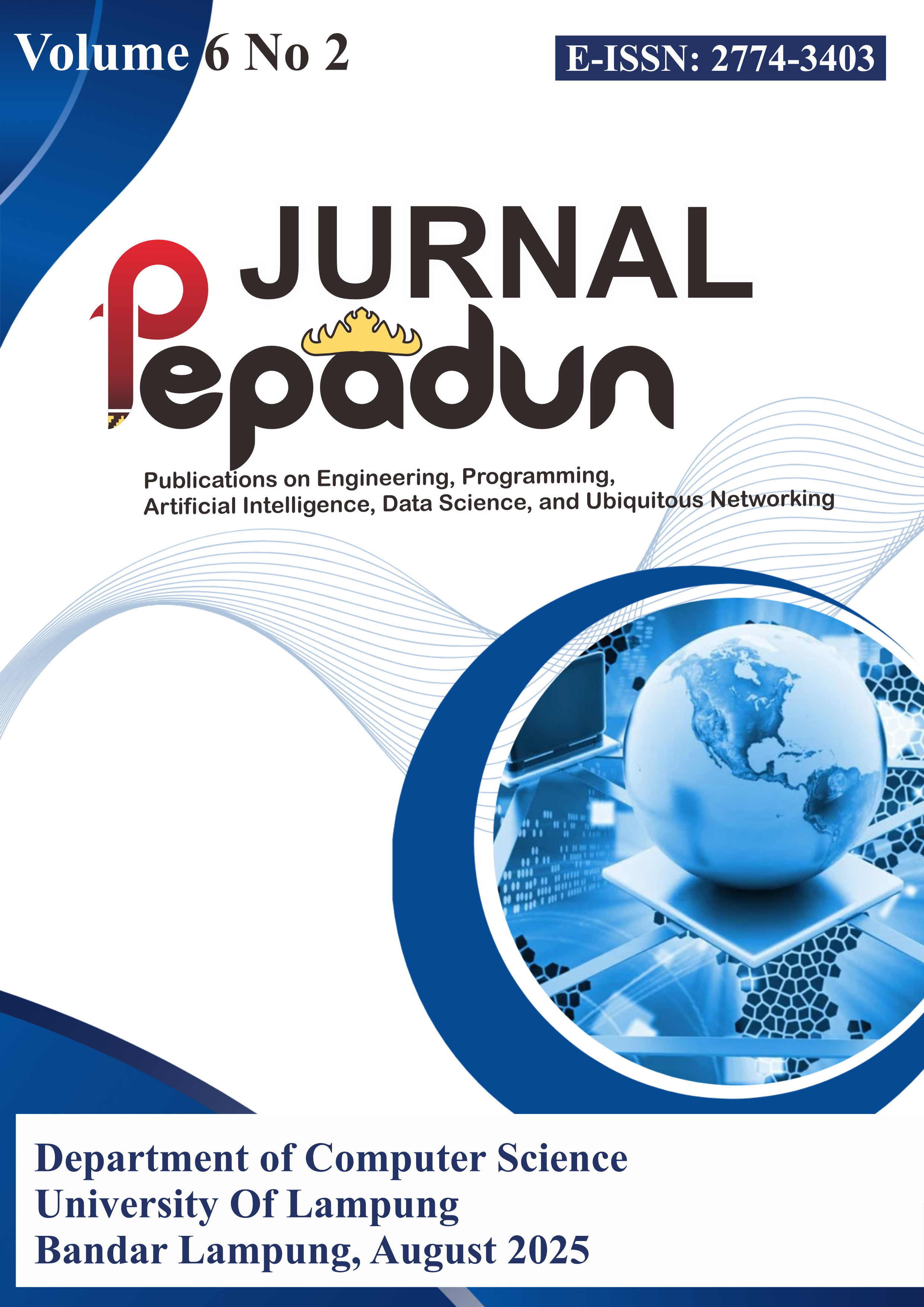Analysis of the Human Capital Information System (HCIS) Using the Design Thinking Approach at PT. Tunas Dwipa Matra
Main Article Content
Abstract
Human Capital is an important asset that supports the productivity and growth of a company, especially in the fast-moving automotive industry. PT. Tunas Dwipa Matra, as the main dealer of Honda motorcycles, faces challenges in tracking employee performance, development, and career progress in a real-time and transparent way. To solve this, the company plans to develop a Human Capital Information System (HCIS) using the Design Thinking approach. This method focuses on understanding user needs and creating solutions through several stages: empathize, define, ideate, prototype, and test. Data was collected through interviews and observations within the company. The results show that an integrated mobile-based system can help management make better decisions, while also helping employees understand and improve their own performance. This study is expected to support better Human Capital management and can be a reference for other organizations developing similar systems.
Article Details

This work is licensed under a Creative Commons Attribution-NonCommercial-ShareAlike 4.0 International License.
References
E. Flores, X. Xu, and Y. Lu, "Human Capital 4.0: a workforce competence typology for Industry 4.0," Journal of Manufacturing Technology Management, vol. 31, no. 4, pp. 687–703, 2020.
I. Asih, H. H. Purba, and T. M. Sitorus, "Key Performance Indicators: A Systematic Literature Review," Journal of Strategy and Performance Management, vol. 8, no. 4, pp. 142–155, 2020.
I. Setiawan and H. Hardi, "A Systematic Literature Review of Key Performance Indicators (KPIs) Implementation," Journal of Industrial Engineering & Management, vol. 1, no. 3, pp. 200–208, 2020.
V. K. Shrotryia and U. Dhanda, "Development of employee engagement measure: experiences from best companies to work for in India," Measuring Business Excellence, vol. 24, no. 3, pp. 319–343, 2020.
R. Eckardt, A. Crocker, and C. Y. Tsai, "Clarifying and empirically assessing the concept of Human Capital resource emergence," International Journal of Human Resource Management, vol. 32, no. 2, pp. 279–306, 2021.
H. Matimbwa and W. Olatokun, “Human capital management information system: scope of application and challenges facing the public sector in Tanzania,” Regional Journal of Information and Knowledge Management, vol. 9, no. 1, pp. 29–46, Apr. 2024.
H. T. Ababneh and F. D. Shrafat, "Human Capital Information Systems: An Introduction," International Journal of Business and Management, vol. 9, no. 9, pp. 193–204, 2014.
A. Mkongo and L. J. Macha, "Impact of Human Capital Management Information System on Organization Performance: A Case of TRA Head Quarter in Dar Es Salaam," Research Trend in Management and Technology, vol. 1, no. 1, pp. 25–47, 2023.
A. Davarpanah and N. Mohamed, "Human resources information systems implementation and influences in higher education: Evidence from Malaysia," International Journal of Asian Business and Information Management, vol. 11, no. 3, pp. 65–84, 2020.
N. Azis, Analisis Perancangan Sistem Informasi, Issue 112, 2022.
R. Islam and T. Mazumder, "Mobile and Its Global Impact," International Journal of Engineering & Technology (IJET-IJENS), vol. 10, Dec. 2020, p. 14.
T. Brown, “Design Thinking,” Harvard Business Review, vol. 86, no. 6, pp. 84–92, June 2008.
J. Farao, B. Malila, N. Conrad, T. Mutsvangwa, M. X. Rangka, and T. S. Douglas, “A user-centered design framework for mHealth,” PLoS ONE, vol. 15, no. 8, pp. 1–18, Aug. 2020.
A. Dennis, B. H. Wixom, and R. M. Roth, Systems Analysis and Design, 5th ed. [Publisher], 2012.
H. M. Jogiyanto, Analisis dan Desain Sistem Informasi, 3rd ed. Yogyakarta: Andi Offset, 2005.
D. Aditama, H. Tolle, and H. Muslimah Az-Zahra, "Perancangan Dashboard Sistem Informasi Pemeringkatan UBAQA (UB Annual Quality Award) dengan Metode Human Centered Design," Jurnal Pengembangan Teknologi Informasi Dan Ilmu Komputer, vol. 4, no. 4, pp. 1100–1109, 2020.
M. H. Musyafa, R. I. Rokhmawati, and Kariyoto, "Analisis dan Perbaikan Usability Situs Computer Assisted Test Sistem Informasi menggunakan Metode Design Thinking dan System Usability Scale," Jurnal Pengembangan Teknologi Informasi Dan Ilmu Komputer, vol. 5, no. 9, pp. 3688–3694, 2021.
G. Booch, J. Rumbaugh, and I. Jacobson, The Unified Modeling Language User Guide. Reading, MA: Addison-Wesley, 1999.
D. Stone, C. Jarrett, M. Woodroffe, and S. Minocha, User Interface Design and Evaluation. San Francisco, CA: Morgan Kaufmann, 2005.
R. Hartson and P. S. Pyla, The UX Book: Process and Guidelines for Ensuring a Quality User Experience. Burlington, MA: Morgan Kaufmann, 2012.
IEEE, IEEE Recommended Practice for Software Requirements Specifications, IEEE Std 830-1998, vol., no., pp. 1–40, Oct. 20, 1998.
I. D. Sabukunze and A. Arakaza, “User experience analysis on mobile design using user experience questionnaire,” Indonesian Journal of Information Systems, vol. 4, no. 1, pp. 15–26, 2021.
ISO/IEC 9126-4, Software Engineering — Product Quality — Part 4: Quality in Use Metrics, International Organization for Standardization, 2004.
A. Bangor, P. Kortum, and J. Miller, "Determining what individual SUS scores mean; adding an adjective rating," Journal of Usability Studies, vol. 4, no. 3, pp. 114–123, 2009.
B. A. Prakoso and H. Fabroyir, "Evaluasi Penerapan Gamification pada Keterlibatan Karyawan di Sistem Informasi Sumber Daya Manusia," Journal of Syntax Literate, vol. 10, no. 2, p. 2096, 2025.
